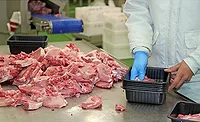Exclusive interview: Cloud-based labeling is the key to fighting foodborne illness


Food Safety Strategies recently was able to talk with Lee Patty, VP and general manager at NiceLabel Americas, about cloud-based labeling systems and foodborne illnesses.
Liz Parker: Can you talk about cloud-based labeling systems and how it helps with tracking and monitoring food?
Lee Patty: When it comes to tracking food and ingredients throughout the supply chain, it’s important to have complete visibility—from where food is sourced, to production and distribution and ultimately as it arrives in stores and restaurants for consumers. Tracking food starts with traceability and asset identification, both of which are enabled by the barcode.
While the barcode provides traceability, it is centralized label management deployed in the cloud that truly enables food manufacturers to enhance safety. Label management controls and extends labeling throughout the supply chain to provide visibility into labeling operations and printing. Food manufacturers can centrally manage label templates and data, instantly deploy approved labels to all locations and suppliers, and simplify compliance with local requirements. Centralized print history and audit trails enable easy identification of lot and batch numbers in the unfortunate event of a recall.
Take for example a potato marketing company that has growers who supply food from various locations. By using the cloud to extend standardized labeling to these suppliers, the company ensures a connected, transparent food supply chain from farm to fork.
LP: What difficulties are there in implementing it/Why isn’t it implemented more across the industry?
Patty: Some companies don’t have the infrastructure and IT resources to implement and support an on-premise label management system. With the cloud, it’s easier. Companies can reap all of the benefits of centralized label management, including lower infrastructure costs, improved quality assurance and faster time-to-market, without IT resources or a significant upfront investment. The cloud provides an efficient way to scale standardized labeling to the entire organization and business partners or suppliers.
Looking for quick answers on food safety topics?
Try Ask FSM, our new smart AI search tool.
Ask FSM →
Cloud labeling technology is relatively new. Adoption will likely increase as more companies understand the benefits of implementing a cloud vs. on-premise solution. Simply put, the cloud makes centralized label management available to everyone across the entire supply chain including smaller businesses with minimal or no IT expertise.
LP: How would a public cloud-based labeling management system like NiceLabel’s help with the issues like foodborne illnesses?
Patty: With the FDA reporting almost half of recalls are due to the incorrect or incomplete listing of ingredients and allergens on labels; label data accuracy and quality are crucial. Chances are, inaccuracies in how ingredient suppliers disclose important information about allergens, additives, physical and chemical properties, and microbiological susceptibility, contribute to mislabeling which can not only lead to foodborne illness but also costly recalls. At NiceLabel, we work in other regulated industries like life sciences where they also see a lot of recalls due to mislabeling.
Cloud-based label management can help by extending compliant and standardized labeling to ingredient suppliers; clearly identifying allergens, expiration date, etc. while also eliminating errors and reducing quality control time and costs.
LP: How can cloud-based labeling management systems help food producers maintain peak production to avoid production stoppage and waste?
Patty: For food producers, every second counts. In high throughput environments, even a second delay in labeling a package results in significantly less packages being packed in a given timeframe. This adds significant labor/operating costs across the entire packaging department which can translate to hundreds of thousands of dollars per day.
In other cases, delays result in scrapping food that could otherwise be sold. These delays can be caused by production downtime or taking time to remediate label errors. Either way, these delays can be costly in terms of the missed opportunity to get more product to market faster, especially when the faster a product gets to the store the more time it has to sell before reaching its expiration date.








